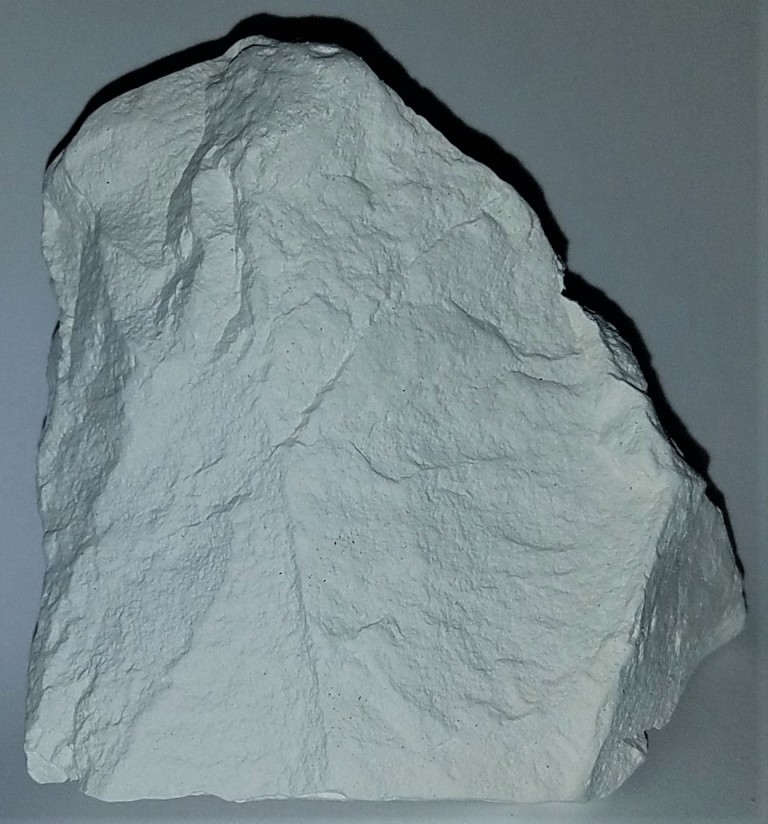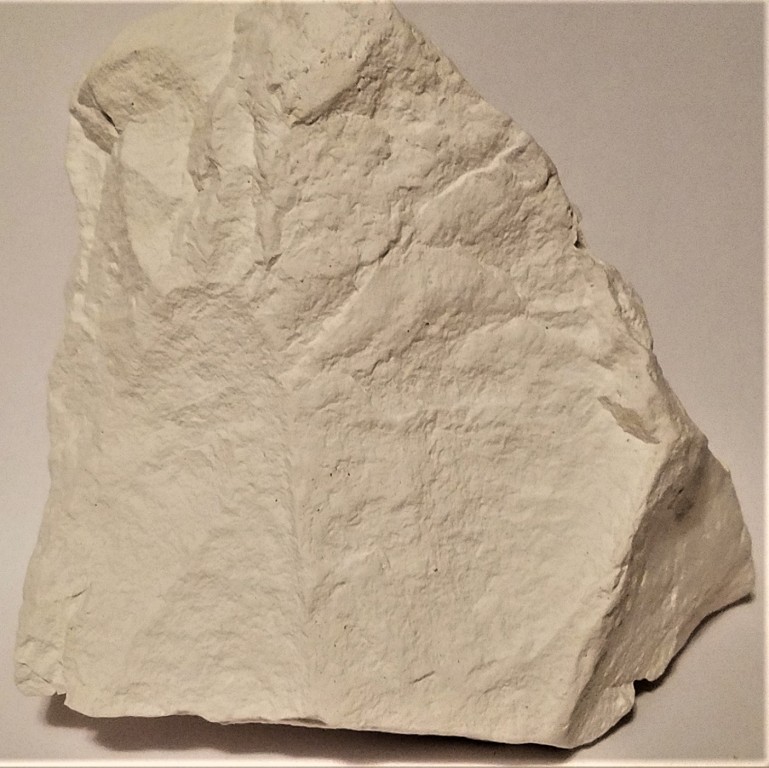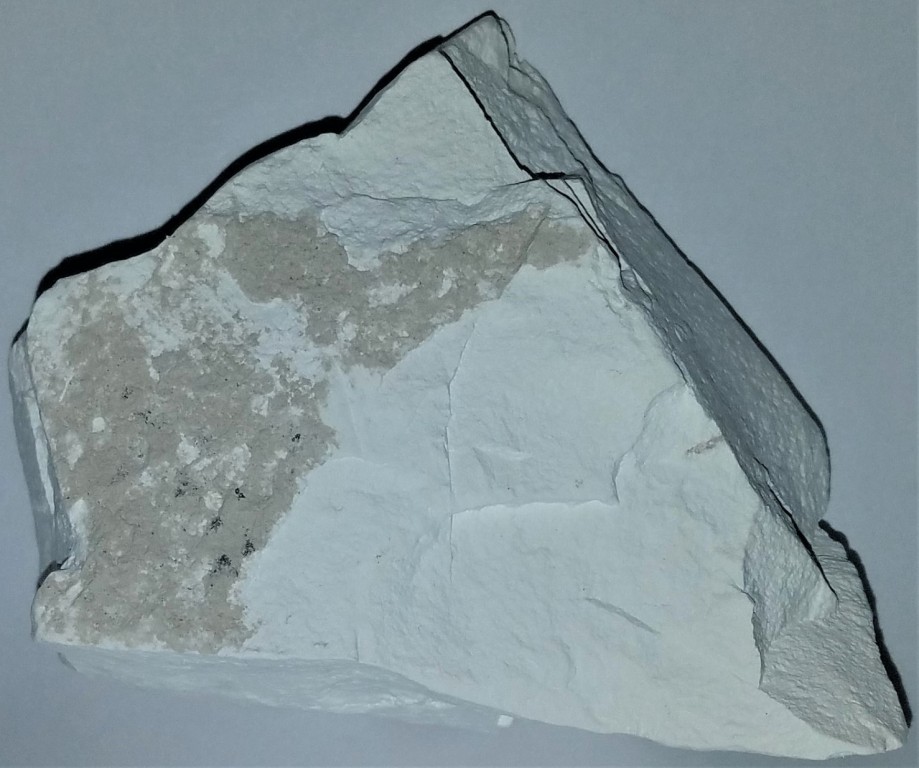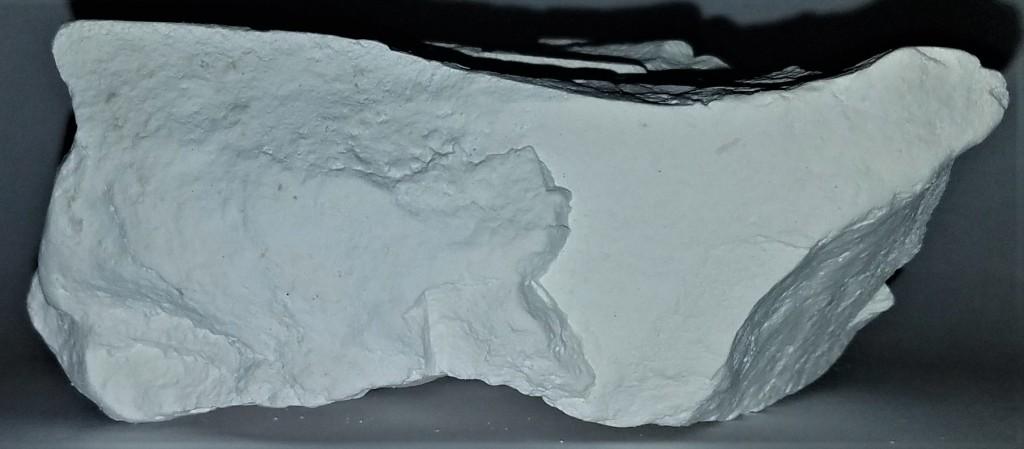Diatomite

Photographed by Michael P. Klimetz
Colado Mine
Velvet District
Pershing County
NEVADA

Photographed by Michael P. Klimetz
Colado Mine
Velvet District
Pershing County
NEVADA

Photographed by Michael P. Klimetz
Colado Mine
Velvet District
Pershing County
NEVADA

Photographed by Michael P. Klimetz
Colado Mine
Velvet District
Pershing County
NEVADA

Photographed by Michael P. Klimetz
Colado Mine
Velvet District
Pershing County
NEVADA
Diatomite is a friable light-colored sedimentary rock that is mainly comprised of the siliceous skeletal remains of diatoms. It is a very porous rock with a fine particle size and a low specific gravity. These properties make it useful as a filter media, an absorbent, and as a lightweight filler for rubber, paint, and plastics. When diatomite is crushed into a powder, it is referred to as diatomaceous earth. Diatomaceous earth is a fine white to off-white powder with a particle size ranging from less than 3 μm to greater than 1 mm, but typically 10 μm to 200 μm. This powder can have an abrasive feel, similar to pumice powder, and has a low density as a result of its high porosity. The typical chemical composition of processed diatomaceous earth is 80–90% silica, with 2–4% alumina (attributed mostly to clay minerals) and 0.5–2% iron oxide. Diatomite consists of the fossilized remains of diatoms, a type of hard-shelled protist. Diatomaceous earth is used as a filtration aid, mild abrasive in products including metal polishes and toothpaste, mechanical insecticide, absorbent for liquids, matting agent for coatings, reinforcing filler in plastics and rubber, anti-block in plastic films, porous support for chemical catalysts, cat litter, activator in blood clotting studies, a stabilizing component of dynamite, a thermal insulator, and a soil for potted plants and trees. Each deposit of diatomite is different, with varying amounts of natural clays and other minerals. The diatoms in each deposit contain different amounts of silica, depending on the age of the deposit. The species of diatom may also differ among deposits. The species of diatom is dependent upon the age and paleoenvironment of the deposit. In turn, the shape of a diatom is determined by its species. Many deposits throughout British Columbia for example are Miocene and contain a species of diatom known as Melosira granulata. These diatoms have a small globular shape and hence provide greater mechanical benefit than that of an older deposit. Diatoms from the Eocene are not as effective in their ability to absorb fluids because older diatoms are usually recrystallized, and their porosity is reduced. Diatomite forms in both lacustrine and marine settings. A single fossilized diatom consists of a pair of symmetrical shells or frustules. Marine diatomite is found in association with a broad spectrum of other lithologies, whereas lacustrine diatomite is almost always found in association with siliceous volcanic rock. Diatomaceous chert is diatomite whose grains have been strongly silica-cemented. Diatoms extract silica from water that is less than 1% saturated in amorphous [hydrous] silica. Their frustules remain undissolved because they are surrounded by organic matrix. Clay minerals may also precipitate on the frustules and protect them from dissolution in sea water. When the diatom dies, the frustule is stripped of its organic layer and exposed to sea water. As a result, only 1% to 10% of frustules survive long enough to be buried under sediments, and some of this is dissolved within the sediments. Only an estimated 0.05% to 0.15% of the original amount of silica produced by diatoms is preserved in the sedimentary record. In Colorado and in Clark County, Nevada, there are deposits that are up to several hundred meters thick in places. Marine deposits have been worked in Santa Barbara County, California and along the Southern California coast. Additional marine deposits have been worked in Maryland and Virginia. Freshwater lake deposits occur in Nevada, Oregon, Washington and California. Lake deposits also occur in interglacial lakes in the eastern United States, Canada, Germany, France, Denmark and the Czech Republic. The worldwide association of diatomite deposits and volcanic deposits suggests that the availability of silica from volcanic ash may directly contribute to the formation of thick diatomite deposits.